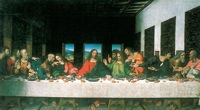Difference between revisions of "Duplicates"
m (Text replacement - "http://" to "https://") |
|||
| (One intermediate revision by the same user not shown) | |||
| Line 2: | Line 2: | ||
==Etymology== | ==Etymology== | ||
| − | [ | + | [https://nordan.daynal.org/wiki/index.php?title=English#ca._1100-1500_.09THE_MIDDLE_ENGLISH_PERIOD Middle English] copie, from Anglo-French, from Medieval [[Latin]] copia, from Latin, [[abundance]] |
| − | *Date: [ | + | *Date: [https://en.wikipedia.org/wiki/14th_century 14th century] |
==Definitions== | ==Definitions== | ||
*1 : an imitation, [[transcript]], or reproduction of an [[original]] [[work]] (as a [[letter]], a painting, a table, or a [[dress]]) | *1 : an imitation, [[transcript]], or reproduction of an [[original]] [[work]] (as a [[letter]], a painting, a table, or a [[dress]]) | ||
| Line 9: | Line 9: | ||
*3 archaic : something to be imitated : [[model]] | *3 archaic : something to be imitated : [[model]] | ||
*4 a : matter to be set especially for [[printing]] | *4 a : matter to be set especially for [[printing]] | ||
| − | :b : something considered printable or newsworthy —used without an [[article]] <remarks that make good copy — [ | + | :b : something considered printable or newsworthy —used without an [[article]] <remarks that make good copy — [https://en.wikipedia.org/wiki/Norman_Cousins Norman Cousins]> |
:c : [[text]] especially of an advertisement | :c : [[text]] especially of an advertisement | ||
*5 : duplicate 1a <a copy of a computer file> <a copy of a [[gene]]> | *5 : duplicate 1a <a copy of a computer file> <a copy of a [[gene]]> | ||
| Line 15: | Line 15: | ||
==Description== | ==Description== | ||
'''Copying''' is the duplication of [[information]] or an [[artifact]] based only on an instance of that [[information]] or artifact, and not using the [[process]] that [[originally]] generated it. With analog [[forms]] of [[information]], copying is only possible to a limited [[degree]] of accuracy, which depends on the [[quality]] of the equipment used and the [[skill]] of the operator. There is some [[inevitable]] deterioration and accumulation of "[[noise]]" ([[random]] small [[changes]], not sound) from [[original]] to copy; when [[successive]] [[generations]] of copy are made, this deterioration accumulates with each [[generation]]. With digital forms of information, copying is [[perfect]]. Copy and paste is frequently used for [[information]] a computer user selects and copies to an area he or she wishes. | '''Copying''' is the duplication of [[information]] or an [[artifact]] based only on an instance of that [[information]] or artifact, and not using the [[process]] that [[originally]] generated it. With analog [[forms]] of [[information]], copying is only possible to a limited [[degree]] of accuracy, which depends on the [[quality]] of the equipment used and the [[skill]] of the operator. There is some [[inevitable]] deterioration and accumulation of "[[noise]]" ([[random]] small [[changes]], not sound) from [[original]] to copy; when [[successive]] [[generations]] of copy are made, this deterioration accumulates with each [[generation]]. With digital forms of information, copying is [[perfect]]. Copy and paste is frequently used for [[information]] a computer user selects and copies to an area he or she wishes. | ||
| − | Most high-accuracy copying [[techniques]] use the principle that there will be only one [[type]] of possible [[interpretation]] for each [[reading]] of [[data]], and only one [[possible]] way to [[write]] an [[interpretation]] of [[data]].[ | + | Most high-accuracy copying [[techniques]] use the principle that there will be only one [[type]] of possible [[interpretation]] for each [[reading]] of [[data]], and only one [[possible]] way to [[write]] an [[interpretation]] of [[data]].[https://en.wikipedia.org/wiki/Copying] |
[[Category: General Reference]] | [[Category: General Reference]] | ||
Latest revision as of 00:16, 13 December 2020
Etymology
Middle English copie, from Anglo-French, from Medieval Latin copia, from Latin, abundance
- Date: 14th century
Definitions
- 1 : an imitation, transcript, or reproduction of an original work (as a letter, a painting, a table, or a dress)
- 2 : one of a series of especially mechanical reproductions of an original impression; also : an individual example of such a reproduction
- 3 archaic : something to be imitated : model
- 4 a : matter to be set especially for printing
- b : something considered printable or newsworthy —used without an article <remarks that make good copy — Norman Cousins>
- c : text especially of an advertisement
- 5 : duplicate 1a <a copy of a computer file> <a copy of a gene>
Description
Copying is the duplication of information or an artifact based only on an instance of that information or artifact, and not using the process that originally generated it. With analog forms of information, copying is only possible to a limited degree of accuracy, which depends on the quality of the equipment used and the skill of the operator. There is some inevitable deterioration and accumulation of "noise" (random small changes, not sound) from original to copy; when successive generations of copy are made, this deterioration accumulates with each generation. With digital forms of information, copying is perfect. Copy and paste is frequently used for information a computer user selects and copies to an area he or she wishes. Most high-accuracy copying techniques use the principle that there will be only one type of possible interpretation for each reading of data, and only one possible way to write an interpretation of data.[1]
